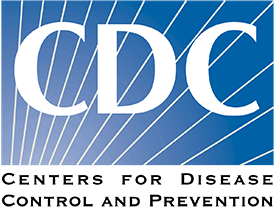Home » News » Reducing the Risk of HPV Associated Cancers
Reducing the Risk of HPV Associated Cancers
Posted by anderc8 on Thursday, October 18, 2018 in News, TIPs 2017.
Written by Ronald D. Alvarez, MD, MBA
 A recent report from the Centers for Disease Control (CDC) examined trends in HPV-associated cancer incidence from 1999-2015 using data from cancer registries covering 97.8 percent of the U.S. population. The report found that 30,115 and 43,371 new cases of HPV-associated cancers were reported in 1999 and 2015, respectively. From 1999-2015, there were slight decreases in cervical and vaginal cancer rates but increases were seen in oropharyngeal, vulvar and anal cancer rates. Penile cancer rates remained stable. The most common HPV-associated cancer in 2015 was oropharyngeal cancer with 15,479 cases among men and 3,438 cases among women. Thus, the need for more effective prevention strategies remains critical.
A recent report from the Centers for Disease Control (CDC) examined trends in HPV-associated cancer incidence from 1999-2015 using data from cancer registries covering 97.8 percent of the U.S. population. The report found that 30,115 and 43,371 new cases of HPV-associated cancers were reported in 1999 and 2015, respectively. From 1999-2015, there were slight decreases in cervical and vaginal cancer rates but increases were seen in oropharyngeal, vulvar and anal cancer rates. Penile cancer rates remained stable. The most common HPV-associated cancer in 2015 was oropharyngeal cancer with 15,479 cases among men and 3,438 cases among women. Thus, the need for more effective prevention strategies remains critical.
 HPV vaccination is one of the most effective means of reducing HPV-associated cancers. HPV vaccination for girls and boys ages 9-26 has been recommended since 2006. Recently, the U.S. Food and Drug Administration (FDA) expanded the indication for HPV vaccination with Gardasil 9 to include vaccination of women and men age 27-45. Gardasil 9 covers nine HPV types, including the ones most responsible for the development of genital warts and cervical cancer. The expanded indication is as a result of studies that have demonstrated Gardasil 9 to be 88 percent effective in the prevention of a combination of persistent HPV infection, genital warts, lower female genital tract precancers and cervical cancer from HPV types covered by the vaccine. Each year, 14 million Americans are infected with HPV and 12,000 are diagnosed with cervical cancer. HPV vaccination provides an opportunity to prevent more than 90 percent of these cancers, a phenomenon soon to be realized in countries like Australia that have school-based HPV vaccination policies.
HPV vaccination is one of the most effective means of reducing HPV-associated cancers. HPV vaccination for girls and boys ages 9-26 has been recommended since 2006. Recently, the U.S. Food and Drug Administration (FDA) expanded the indication for HPV vaccination with Gardasil 9 to include vaccination of women and men age 27-45. Gardasil 9 covers nine HPV types, including the ones most responsible for the development of genital warts and cervical cancer. The expanded indication is as a result of studies that have demonstrated Gardasil 9 to be 88 percent effective in the prevention of a combination of persistent HPV infection, genital warts, lower female genital tract precancers and cervical cancer from HPV types covered by the vaccine. Each year, 14 million Americans are infected with HPV and 12,000 are diagnosed with cervical cancer. HPV vaccination provides an opportunity to prevent more than 90 percent of these cancers, a phenomenon soon to be realized in countries like Australia that have school-based HPV vaccination policies.
 Cervical cancer screening also remains an important strategy in reducing risks. This screening is designed to detect precancerous cervical lesions, which can be effectively treated before cancer develops. Recently, the U.S. Preventative Task Force (USPFT) released new recommendations for cervical cancer screening. Specifically, the screening should not be performed before the age of 21. Between ages 21-29, the USPTF recommends cervical cytology be performed every three years. Between the ages of 30-65, the USPTF recommends high-risk HPV testing alone or in combination with cervical cytology every five years. Cervical cancer screening is not recommended for women beyond age 65 with no prior history of cervical dysplasia or for women who have had a hysterectomy for benign indications.
Cervical cancer screening also remains an important strategy in reducing risks. This screening is designed to detect precancerous cervical lesions, which can be effectively treated before cancer develops. Recently, the U.S. Preventative Task Force (USPFT) released new recommendations for cervical cancer screening. Specifically, the screening should not be performed before the age of 21. Between ages 21-29, the USPTF recommends cervical cytology be performed every three years. Between the ages of 30-65, the USPTF recommends high-risk HPV testing alone or in combination with cervical cytology every five years. Cervical cancer screening is not recommended for women beyond age 65 with no prior history of cervical dysplasia or for women who have had a hysterectomy for benign indications.
HPV ACTIVE, a 2017 Vanderbilt TIPs program, will sponsor the second-annual HPV Infection and Associated Cancers Symposium on March 1, 2019. The event will include lectures on new and developing cervical cancer screening and HPV vaccination strategies. Please mark your calendar for this exciting symposium!
